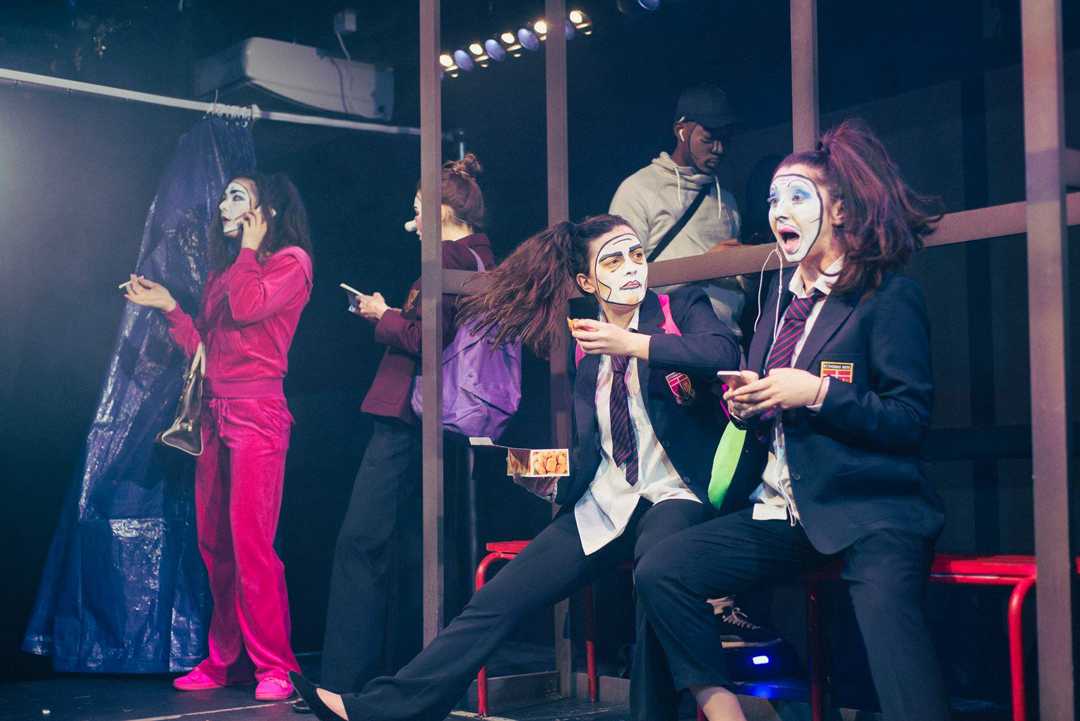TiMax in immersive experience at Mountview
- Details

Tasked with creating the sound design was student sound designer John ‘JP’ Guerrier, who had become familiar with the TiMax spatial reinforcement capabilities following a training workshop. He decided the technology would be ideal to support an immersive soundscape that every member of the audience would respond to.
Mentored by sound supervisor Dafyyd Gough - himself a professional sound designer - JP established a 10.2 loudspeaker system, including a pair of overheads, distributed around the Mountview’s black box studio theatre space.
TiMax created live overhead train announcements, supermarket PA effects and also a preacher’s speaker box effect with the help of the onboard EQ.
“We used TiMax extensively to create the obvious effects such as car pass-bys, for pulling focus and for chase sequences,” Gough explains. “There was a moment in the play where the main character gets stoned and we slowly started to spin the music stems around the room to mimic the character’s experience.”
Having previously been in sound teams on productions where TiMax had been used, Gough was familiar with the technology, though he insists: “I obviously take no credit - it was all JP - but [his sound design] obviously made a good impression.”
With Gough’s guidance, JP made sophisticated use of TiMax and its object-based static and dynamic imaging capabilities. Not only was TiMax pulling focus for anchored effects localisation, but also multichannel stems of soundscapes surrounded the audience to immerse them into the environment of each scene. In some instances, for added impact, JP used the TiMax object-based spatial rendering to expand the breadth of the music playback for more dramatic pause and impressive drops.
JP states: “Without TiMax, we wouldn’t have had time to manually programme all of the object movements in the show, even if we’d used custom QLab scripts. The TiMax workflow made a huge difference to the tech process. The transitions and soundscapes were incredibly immersive and hyper-realistic. Having such powerful imaging capabilities made the production a dream for me!”
Gough adds: “TiMax certainly lived up to its name and ‘maximised’ our time! Without it, controlling and directing the free-roaming audience would have been very challenging, if not almost impossible. Performers then would have had to focus on logistics rather than their performances.”
(Jim Evans)
















